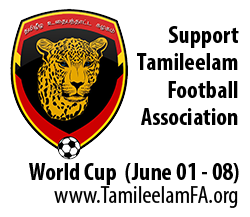Posts Tagged ‘Tamil History/Culture’
The Permanent Peoples Tribunal’s Latest Landmark DecisionBy Admin - December 23rd, 2013 |
 |
|
Written By: Athithan Kurukulasingam On December 11, 2013 a panel consisting of 11 high profile judges passed a judgement ruling that Sri Lanka had indeed committed the crime of genocide against the minority Tamils. The 11 member panel which was part of the Permanent Peoples Tribunal (PPT) also went on to declare that the United States and United Kingdom were also ruled to have been found guilty of complicity to this crime (Veerasingam, 2013). The fact that such a high profile tribunal came out with a conclusion of genocide should not go unnoticed. For years, Tamils all over the world have been calling out for an independent investigation by an accredited third party into the allegations of war crimes, unfortunately for the most part our cries have gone unnoticed. The Sri Lankan government also refused to cooperate and still refuses to cooperate to this day. This recent ruling should work favourably in our plight because it forces the hands of many of the great powers all over the globe. It can be argued that the most shocking aspect surrounds the second part of the ruling. The United States and the United Kingdom have been found guilty of complicity to the crime. For those of you who aren’t too familiar with this notion, complicity is defined in this situation as ” procuring means, such as weapons, instruments or any other means, used to commit genocide, with the accomplice knowing that such means would be used for such a purpose; complicity by knowingly aiding or abetting a perpetrator of a genocide in the planning or enabling acts,” (Veerasingam, 2013). The cries of our people were for so long left unheard. Time after time, we were left with empty promises . While the world stood by, our people died on mass. This ruling not only is a smack in the face for all the democracies around the world, it also can carry legal ramifications to the countries involved. By committing complicity, these two great powers of the world did their part in the genocide that took place. India has long been accused of doing their part in the genocide and their involvement is still under investigation by the PPT. The blood of all our brothers and sisters are now also now on their hands as well and it is only a matter of time before all the perpetrators are brought to light. I find that there is always a silver lining to situations and this recent ruling is no exception. Fundamental beliefs and core values of people usually never change and for the most part they stand by those very standards. The European Union (EU) and the United Nations (UN) although considered organizations are in fact made up of people like you and I and do have their own fundamental moral beliefs and values. For long, they have failed to protect the people of the world, Rwanda and Sri Lanka being just being two examples amongst the many. However, they now have the ability not to make up for their past mistakes but rather they can make sure nothing like this ever happens again. Even to this day, Tamils in Sri Lanka are facing humanitarian problems and crimes against humanity are still taking place. The EU took a corrective measure in this monumental problem. “The EU has passed a resolution that states the United Nations should initiate an international investigation into allegations of violations of international humanitarian law, if Sri Lanka fails to start one itself, before March 2014” (Tamil Guardian, 2013). This ruling works favourably with the recent incidents that took place at the Commonwealth Summit in Sri Lanka. England’s Prime Minister chose to pressure the Sri Lankan government into allowing a credible and independent investigation into what happened in the past. These kind of rulings and resolutions are what the activists for change have been calling for. What we are now seeing is a new shift in thinking from the international community. It is my belief that change does not take place overnight, steps have to be both calculated and effective. In order to bring change you have to continue to push the matter. You can’t stand on the sidelines and expect to lead a team. You have to be both active and involved. Now is the time for the international community to take further initiative. These recent landmark rulings have the international community on edge, they no longer can’t deny the claims to genocide. Their backs are against the wall and it is up to fellow Tamils all around the world to push forward. I have long held the opinion that the students are our future. The more we continue to push forward the more we can accomplish. It is up to us to be the change we wish to see in the future. “The most important kind of freedom is to be what you really are. You trade in your reality for a role. You trade in your sense for an act. You give up your ability to feel, and in exchange, put on a mask. There can’t be any large-scale revolution until there’s a personal revolution, on an individual level. It’s got to happen inside first.” Bibliography Tamil Guardian. (2013, December 13). EU Parliament sets March 2014 deadline. Retrieved December 13, 2013, from Tamil Guardian: http://www.tamilguardian.com/article.asp?articleid=9489 Veerasingam, R. (2013, December 11). Sri Lanka guilty of genocide against Tamils with UK, US complicity: PPT rules. Retrieved December 16, 2013, from JDS: http://www.jdslanka.org/index.php/2012-01-30-09-30-42/human-rights/426-sri-lanka-guilty-of-genocide-against-tamils-with-uk-us-complicity-ppt-rules |
The Great Raja Raja CholanBy Admin - December 19th, 2013 |
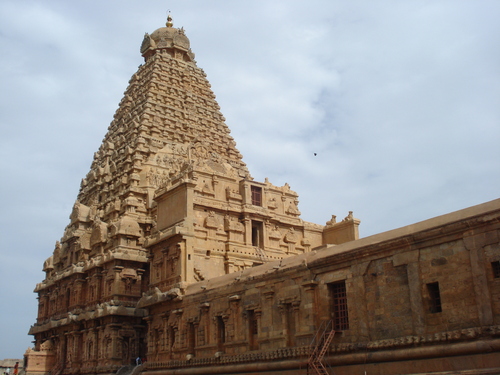 |
|
This post is part of the Tamil Heritage Month Initiative. Tamil Heritage Month began in 2010 and seeks to celebrate Tamil heritage, culture, and history. Throughout this month and January, we will be providing you with educational material and poetry such as this that seeks to help us celebrate and understand our culture, roots and heritage. Written By: Kayalvizhi J. Rajaraja Cholan was one of the greatest kings of the Chola Empire who ruled between 985 CE and 1014 CE. Rajaraja Cholan and his son, Rajendra Cholan have been credited with the expansion of the Chola Empire by virtue of winning land through military battles against the Sinhala and Pandaya armies. His strength, valour and power has been celebrated in Tamil literature, movies and songs. Some of his greatest achievements, the building of the Raajarajeswaram in Thanjavur, still remain as one of the most amazing architectural achievements to date. The Raajarajeswaram in Thanjavur is now regarded by UNESCO as a World Heritage Site. The construction of the temple was completed on the 27th day of the 25th year of Rajaraja Cholan’s reign. Rajaraja Cholan was named Arulmozhi Varman at birth. His name became Rajaraja Cholan (Great King) with the victories he won in battle. He was the third son of Parantaka Sundara Cholan and Vanavan Mahadevi. Rajaraja His elder brother, Aditya II was assassinated, although the circumstances surrounding that are unclear. According to inscriptions on the Thanjavur Temple, his only known son is Rajendra Cholan. Brihadeeswara Temple built by Raja Raja Chola I in 1010 A.D. A lot of what we know today, we have read or heard about – but many of it comes from records he left himself. Rajaraja Cholan was a King who understood the value of a recorded history and brought about standardized inscriptions. He recorded all of his military achievements and important events in gold, copper and stone inscriptions. He is credited as the first king of South Asia to do so. Even the past Pallava, Pandhya and Chola dynasties failed to leave a record of their military achievements in stone. His successors have all followed suit in leaving behind a recorded history of their military achievements. Rajaraja Cholan was also instrumental in retaining past historical information and the records of his predecessors. An inscription found at Tirumalavadi notes that Raja Raja Cholan ordered the inscriptions from central shrine in the Vaidyanatha Temple should be recorded in a book and re-inscribed after it was being rebuilt. Rajaraja Cholan also issued that all donations and grants made to the Thanjavur Temple, a temple build during his reign, be engraved in the stone. Rajaraja Cholan Status ManimandapamRajaraja Cholan was a King tolerant to the religious practices of others – although he was a follower of Lord Siva, he has constructed Vishu Temples, the Buddhisht Chaudamani Vihara. His sister, Kundavi, built a Jaina Temple, the Kundavi Devi Jinalaya. His sister Kundavi was regarded highly among him, and Rajaraja Cholan had much admiration for her. She was married to a Bana Price, Vallavaraiyan Vandiyadevan. Rajaraja Cholan is also widely regarded for his administrative practices. He brought into a system of audit and control that was governed by village assemblies and public bodies. Through his policies, administration and accountability were brought about. His organization also carried on to creating one of the most powerful standing armies and navy. His son, Rajendra Cholan was named supreme commander of the northern and northwestern dominions of the Chola Empire. Rajaraja Cholan engaged in many conquests, some of his last being his naval conquests in the sea, Maldives and neighbouring regions. The influence of Tamil dominance can still be seen in some of the islands today. For examples, some of the islands in Indonesia, which were once conquered by Rajaraja Cholan have Tamil names: Aru, Natuna=middle, Banda=Pandyan, Pahlawan=Pallavan, Zulu=Chola, Rajaraja Cholan was a widely respected and regarded King by his subjects. His valour, power and expansion of the Chola Empire brought him much admiration. He has been referred to by other names including Abayakulasekarar (one who has a lot of groups who have surrendered before him), Azhagu Cholar (the most handsome Chola King), Ravikulamanikam (the King like a Ruby), Sanda Parakramar (The King with the power of Wind), Nigarili Cholar (The Chola King without comparable Kings), Panditha Cholar (the Chola King who is complete with knowledge) and Jayamkonda Cholar (The King who is always victorious). Rajaraja Cholan continues to be a person of interest to Tamils, he has been the subject of many books and dramas. Including movie, Rajaraja Cholan by Shivaji Ganesan, Kalki’s literary masterpiece, Ponniyin Selvan with Arulmozhi Varman as the protagonist, Sujatha’s Kandalur Vasantha Kumaran Kathai, Seshadri’s Raja Kesari, and many more. |
Thangachi’s Corner – Tamil titles: yes or no?By Admin - December 18th, 2013 |
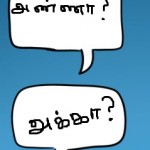 |
|
December 18, 2013 Updated every other Wednesday, “Thangachi’s Corner” is a bi-monthly feature that discusses relatable topics and issues relevant to the Canadian Tamil youth of today. For more information about this feature or to suggest a topic, feel free to e-mail us at blogs@ctya.org! Written By: Keerthana Raveendran I have been “Thangachi” for as long as I can remember. In fact, my parents were so keen on my brothers and me using these kinds of respectful Tamil names that they would address us the same way, just to make sure it caught on in our young minds. It was always fun when we’d go to parties and my mom would call out ‘Anna’. While some folks would expect an older figure to respond, it was always a little boy who’d turn his head. These names continued to stick with us as we grew up, and it came to the point in which we felt far too awkward addressing one another by name, even when we were in public or in the midst of a large crowd. I’m sure a lot of you can relate. Respectful titles for immediate family members, and tag-ons for extended family (that is, “insert name here” sithappa, and such) are very much an integral part of our Tamil culture. We use these titles to demonstrate reverence for the older generation and endearment towards the younger one. They are one-word connections with our heritage, linking us to our past even in our everyday interactions. But I’m finding more and more in my contact with younger kids at Tamil community events that this particular tradition has been slipping. Maybe it’s a sign that I am no longer a part of the younger generation and that I have officially become stodgy. Or maybe this just isn’t common practice in today’s age. After all, I get it—we tend to meet people in Anglophone settings and sometimes you never know right off the bat whether the person you just met is older than you. But I daresay a ten-year age gap is fairly obvious. And I don’t know about you, but I feel an odd sense of offense when obviously younger kids address me by my name. It’s an inexplicable sentiment, and I honestly could not tell you why I feel strongly about the use of Tamil titles, other than for an arbitrary notion of respect. Perhaps it’s a mere exercising of what I’ve been exposed to my entire life, and it begs an answer to the question of whether we are conditioned to accept the concept of respect as practiced by our ancestors. Or are we just holding onto a tradition we shouldn’t expect our young to follow? What do you think? Tamil titles: yes or no? About the Author: Keerthana Raveendran, known by her flock as Thangachi, is an aspiring author whose motivation to write usually kicks in when she’s supposed to be occupied elsewhere. She is an avid procrastinator who sees potential novel ideas as movies in her head. Maybe one of these days they’ll make it onto the page. Thangachi is currently a Masters student studying English at York University. Read More by Keerthana! |
The Lost Continent of Kumari Kandam (Lemuria)By Admin - December 4th, 2013 |
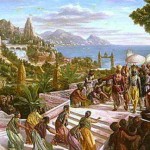 |
|
Written By: Kayalvizhi “When the southern ocean boiled over and seized the land, fine men, graceful women, and beautiful people, shapely colorful birds, animals and other living beings all suffered and perished. Temples, mansions and palaces, renowned Tamil libraries and the rare arts, colleges and schools, assemblies and meeting houses, market places and port facilities, homes, gardens and playing fields, all disappeared into the ocean.” Mutthuvirasami Naidu eloquently describes the destruction of Lemuria by ocean waves. Lemuria, also known as Kumarikandam remains a point of fascination and enhancement of Tamils everywhere. From the Silapathikaram, a Sangam literature, to modern writings, references have been made to Kumari Kandam and cruel sea that destroyed it. Kumari Kandam was a continent which extended east to Australia and in the West to Madagascar. Its inhabitants were the Tamils before it was consumed by ravaging waves. The volcanic eruptions paired with violent raging waves resulted in submerging Kumari Kandam. Kumari Kandam was Tamil land. It was the birthplace of our ancestors.Today, Tamil scholars who try to piece together the puzzle of the missing continent ask the question, what did we lose through Lemuria? The name itself, Kumari Kandam, meaning virgin continent/land was originally referred to locally as Kumari Nadu. Later, it became Kumari Kandam to Tamils. Its English reference, Lemuria, has a much more colonialist naming. Lemuria, was named by English zoologist Philip Sclater in 1864 after the monkey-like lemurs which he felt inhabited the land. He referred to Tamils who inhabited the land as beastly and lemur looking, and thus the name Lemuria was born. Tamils, not accepting Lemuria as a respectful name, continue to refer to this lost continent as Kumari Kandam. The name itself suggests that Kumari Kandam was a virginal, untouched, unviolated land – once which gave birth to the ancient Tamil civilization. The loss of our land and culture through Kumari Kandam has affected our influence and survival. Scholar A. M. Paramasivanandam once said, “If today our ancient Tamil land and ancient Tamil learning had survived, we would have ruled the world from Kumari to the Himalayas!” Our ancestors once rules the vast continent of Kumari Kandam, but today, we have been confined into relatively small space – that too which is being appropriated away from us. The interest of Lemuria was sparked in the 1890s, when Tamil intellectuals first started to piece together European geographies with Tamil history, language and literature. It was during this period that Tamil intellectuals began to recognize Kumari Kandam as the birthplace of Tamil language, literature and culture. Kumari Kandam was a continent we Tamils ruled, our literature, culture and language thrived in our own land. The imagination and fascination of Kumari Kandam will continue. However, we need to be the ones to undercover our history. With a renewed interest by Tamils into roots and history, maybe we may learn more of our history. Our history, much of it burned in the Jaffna Library, other scribes are locked up in libraries and scribes un-deciphered – at the Roja Muttiah Library now owned by American Universities and other undetected books. Maybe these artifacts can tell the tale of Kumari Kandam and more about our Tamil history. What happened to the history of Kumari Kandam?? Will we find out? |
Remembering our HeroesBy Admin - November 27th, 2013 |
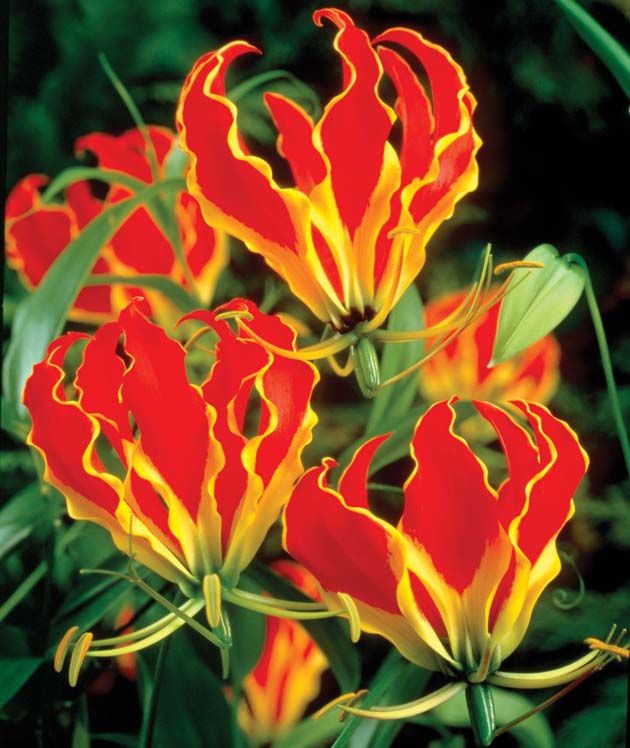 |
|
Written By: Kayalvizhi J. Today, marks the 25th anniversary of Maveerar Naal. The first cadre, Lieutenant Shankar passed away on November 27,1982. In remembrance of his day of passing and the countless sacrifices of our courageous heroes, November 27th was declared as Maveerar Naal (Heroes Day) in 1988. In the fight for freedom our country has given a huge price. Our Maveerarkal. Maveerar Naal is not a day of mourning, it is a day of rising. It is a time to remember in honour and withpride the sacrifice of our brothers and sisters. They gave themselves protecting us – our land, our identity, our culture. In a time and age when even family may not always protect each other, our Maveerarkal sacrificed themselves for our liberation and freedom. The Kaarthikai Poo was declared as Tamileelam’s National Flower in 2003 for it contained the colours of the Tamileelam National Flag, red and yellow. Today, we must wear our Kaarthikai Poo with pride today. When someone asks, “why are you wearing that?” we must speak of the sacrifices of our Maveerarkal. The sacrifices of our Maveerarkal must not be forgotten. It must not just be recorded in books and museums. The sacrifice of our Maveerarkal must be honoured, and the way to honour them is to move their dreams for a free Tamileelam forward. Our kin, our people, still suffer enormously in the hands of an oppressive regime. Even now, years after Mulliyvaikal, we hear stories of the suffering of our people – our people face rape, disappearance, coercive population control, and disenfranchisement. It was to fight this oppression that our Maveerarkal gave themselves. We too, the children of Tamileelam have a duty to protect our Mother, Our Nation. As Thalaivar has said, “the patterns of battle may change, but our battle ideal will never change.” The pattern of battle have changed, but our freedom is still dear to us, and we have a responsibility to liberate our nation from oppression and genocide. Our Maveerarkal have protected us, our lands – now it is our responsibility to move their dreams forward and work towards protecting our people and land. We, the Tamil youth in Canada have education – and this education can turn our nation around. What can we do legally to bring justice to our people? What can we do socially and culturally for our people? How can we use our young engineers and IT professionals to build something for our people? We need to believe that we can change the fate of our nation through our education, and actually work towards it. If we do not, we will just have another generation of Tamils who will be oppressed, raped and killed by the Sri-Lankan Government. How many of us are willing to idly watch? |
My Hero – A True StoryBy Admin - November 22nd, 2013 |
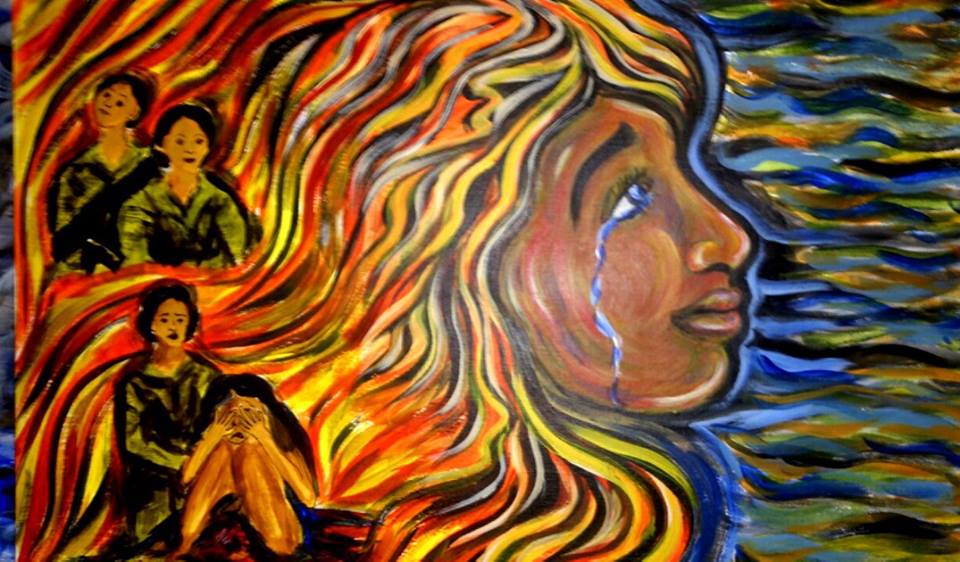 |
|
Written & Painting By: Keerthana Nagaratnam We all have a hero in our lives, in my family our hero is my sister. She is not my blood sister, she is my cousin sister. She is the daughter of my mother’s younger sister. She was known as Yaal Esai, and was the only female Maveerar of my family. At a very young age she left home to fight for freedom. Freedom that will give ethnic Tamils rights to speak their mother tongue, go to school and be treated equally. She was a courageous girl. She had a strong personality. She had her own style, her own uniqueness. She was a different beauty. Her hair was as black as the night sky, and her brown complexion was like a chocolate river. Her attitude was sharp, with a strong personality. She had the will power and confidence to take on any challenge, but she was only 18, an age that was too young to trust. She was in the 10th grade, and was a great student. Her strongest subject was math and science. Everything in her life went smoothly, until that one day. It was a day we could never forget, a day that changed her life. It was a school day and a rainy one too. The clouds cried rain, pouring on to the roads making it flooded with water. The streets were filled with huge mud puddles. The students had to run for cover under the nearest tree. It wasn’t like a school that we assume to see with tables, chairs, rooms or a roof. It was in an open field, and consisted of sitting in the hot sun. She was one of the children who stood under a tree waiting for the rain to stop. As they waited, an army truck pulled into the school property. Six Sri Lankan military soldiers got off the truck. They said they were inspecting and spoke to the teacher. After questioning about the school the men walked around the children. Vasanthi, was a friend of my cousin, was standing under small mango tree, which was a bit further than where the rest of the students were standing. Her uniform was soaked because of the rain, making the outline of her undergarments visible. She was a year older than my cousin, and was ripening as a woman. She was fair with skin clear like ivory, with glowing eyes like night stars. She just hit puberty and was glowing, looking ever so beautiful each day. Read More. |
Remembering our MaveerarBy Admin - November 21st, 2013 |
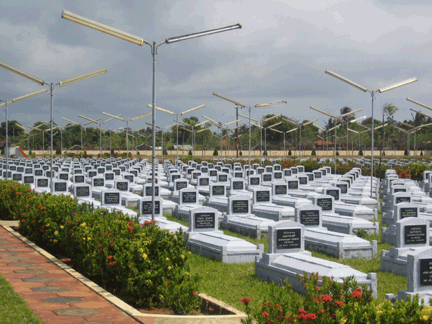 |
|
Written By: Prynth N. Every year, in the month of November, Remembrance Day is commemorated to remember the fallen soldiers who defended liberty, equality and humanity of their homeland with their life – this is observed in North America and in many parts of the world. Many of those wars were fought outside their homeland to prevent the invasion of their hoemland and a dictatorship state. As the people of Tamileelam, we commemorate our Remembrance Day, Maveerar Naal on the 27th of November. In Tamileelam before 2009, there was the Maaveerar Week that had incorporated many festivities in different cities were people showcased their love for our heoroes of Tamileelam. Themes such as sacrifice, determination, dedication were very dominant. Almost every family had a Maaveerar who sacrificed their life for Tamileelam. Thuyilum Illam was filled with not just graves, but legacies of the past that our resistance movement was built on. I was told how even vehicles passing by Thuyilum Illam slowed down to show their respect to our fallen. I can only imagine how much our people held this month dear to their hearts in Tamileelam because I never had the chance to go back to my homeland. I didn’t even get the opportunity to be born in my own homeland because of the genocidal Sri-Lankan onslaught against our people, which forced my parents to flee the country. Today in our homeland, everything has been wiped out to erase our identity, history and pride. Will this stop us from remembering our heroes of Tamileelam in our homeland and the diaspora? Will this shake our morale to such an extent to forget the 30+ years of legacy that paused in Mulivaaiykal? Read More Inside |
25th Anniversary of Maveerar NaalBy Admin - November 20th, 2013 |
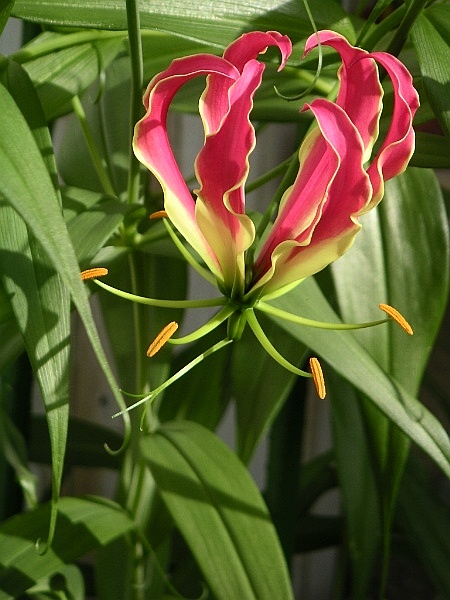 |
|
By: Athithan Kurukulasingam Maveerar Naal is a day of remembrance for our beloved soldiers who fell fighting for a cause they felt worthy enough to sacrifice their lives for. This year marks the 25th anniversary of Maveerar Naal and it is more important than ever to remember why these soldiers sacrificed their lives for us. One shouldn’t just use this day of remembrance to reflect on the struggles of our brothers and sisters, rather we should relive their sacrifices on a day to day basis. Our brothers and sisters who have perished wouldn’t want us to reflect negatively on the past; moreover, they would want us to fight for the future so that the struggles they went through would not be wasted. On November 27th we should pay homage to our brothers and sisters out of respect, compassion and gratitude. They sacrificed they lives so that we could grow up without the barriers and hardships they faced. When people imply that our children are our future, I immediately think back to our Maveerar. Most of our freedom fighters were just like you and I, young people with big ambitions, a long life to look forward to. They all dreamt about making their mark on the world; however, as much as they wanted to live their lives, they were willing to give it all up so that the kids of tomorrow never would have to worry. Sacrifice can mean many different things; giving up that last piece of chocolate; giving your cousin that toy you loved as a kid; offering your seat to an elderly person, these are all examples of sacrifices we make on a day to day life. Now let’s look at the sacrifices our fellow brothers and sisters made back home. They sacrificed first and foremost their families, a thought that many of us will never be able to comprehend. One truly cannot appreciate the value of family until they are taken away from us. Our freedom fighters in a selfless act, willingly left their families so that they can fight for the many. Another sacrifice that was made was the education of our freedom fighters. We all know the oppressive and underhanded tactics used by the government to singlehandedly restrain Tamil students from progressing on towards higher education. This methodical process prohibited even the greatest of minds from succeeding. To combat this issue, our brothers and sisters sacrificed their careers for us. Many of our fallen soldiers would be in their 40’s right now if they were alive today. Who knows what great scientist, doctor, engineer or better pioneer we could have known had they been alive. The list of sacrifices that our brothers and sisters made can go on for a very long time but there is one final sacrifice I would like to mention, comfort. Our freedom fighters gave up the comforts we take for granted in our day to day lives. Our freedom fighters gave up the comforts of their own homes; they oftentimes fought in the jungles of Mulliyvaikal; they gave up their friends; they gave up their favourite foods and many more. These small comforts cannot be undervalued. Sacrifice according to you and I may now might not seem as drastic as it once did. On November 27th we should pay our respect to those very sacrifices our brothers and sisters made. Maveerar Naal is a day of remembrance. We should stand in silence and reflect on the lives of our freedom fighters. When you go and lay your flowers or garlands on the Thuyilum Illam, you should stand humbly and with appreciation. We should as a collective whole try to find a way to bring to fruition the dreams of those we lost. The struggle to fight for our own homeland continues, we the students of today have the opportunities and means to wage a new kind of war. A war that has the capabilities to bring to light the atrocities that were committed by the government and their senior members. This war can achieve accountability and punishment for the crimes that were committed; furthermore, this war can achieve our own national state of Thamil Eelam. While our fallen soldiers rest in heaven, they will only truly rest in peace when they see the rise of a new sunrise on the soils of Thamil Eelam. “Nothing I can say will ever be able to express the feeling of Maaveerar Naal. I have always celebrated Maaveerar Naal abroad, and to actually know what sadness and pride combined would feel like whilst standing on the soil that we so long to own as ours, the soil on which thousands had shed blood and tears whilst fighting for self determination, the soil that we would one day call Tamil Eelam, was absolutely amazing.” (Sampavi, 2005) |
The Bigger Picture, Take a step back.By Admin - October 10th, 2013 |
 |
|
Written By: Shankar Raj When you look through your two eyes, in most cases it cannot capture the beauty of what is around you. Your eyes are only capable of capturing a certain distance, you may noticed that if you take a step back your brain starts to provide you a better understanding of the environment you are in. You start to develop a stronger understanding of the vibe around you and the pace of the world around you. In our generation many of us grew up with some knowledge of the fight for the freedom of our people. We can recall many symbols of our porattam, whether it is our beautiful Puli Kodi that instills us with great pride. Or our heroic, unwavering leader who inspired us to have great self respect for being Thamil, our Thalaivar Velupillai Prabharan. Or the Kalarais which remind us of the divinity and power of the sacrifices each one of our Maaveerar gave us. And many of us recall a great sense of pride and fire to strike back when people challenge us of our beliefs. Although it is great we are defend ourselves’ we should also take the necessary steps to educate ourselves of many important things Anton Balasingham, Lt. Col. Thileepan, and countless heroes such as Kittu Anna, who have left behind messages for us. Even in Thalaivar’s speeches and interviews where we see tons of foreshadowing of the Eelam struggle. It takes a great deal of self initiative to educate yourself using books such as the Will to Freedom, War and Peace, or a Fleeting Moment in my country, or reach out to local Tamil organizations who seek to protect Tamil identity. I am no one to tell anyone what they should and shouldn’t do but, putting aside some time to find out the fundamentals of your identity should be considered as an essential part of discovering who we are. As a generation growing up with access to up and coming technology, and state of the art education systems, as Tamil Youth we can seek to achieve great heights in many industries. We have great potential to become great leaders in our community and rebuild our homeland Tamileelam, when it is finally liberated from the chains of the oppressive Srilankan government and external forces. At a moment in history when there are vast amounts of questions and plumbs of smoke, what I am saying to you today is, we should take a few steps back and look at the entire picture of the Eelam struggle. Look at the progress we are making as a the Tamileelam movement. Let us recall our principles, and what those who have genuinely fought for the Eelam struggle have told us. Let put aside little, little issues that are between us and stand united as we take move forward into the vast unknown the future holds for us with a positive outlook. As when one day the smoke does clear and the Eelam struggle is justified as a genuine struggle among others in history, we will rejoice in our beautiful Tamileelam. |
Thangachi’s Corner: The Art of Tamil CuisineBy Admin - August 28th, 2013 |
 |
|
CTYA’s Blog has started a new Feature every other Wednesday called “Thangachi’s Corner”. “Thangachi’s Corner” is a comfortable space to discuss relatable topics and issues relevant to the Canadian Tamil youth of today. For more information about this feature or to suggest a topic, feel free to e-mail us at blogs@ctya.org! Written By: Keerthana Raveendran The task of learning Tamil cuisine was my Everest once upon a time. I spent a lot of time helping my mother cook as a child, was preparing breakfast for my family every morning by the time I was in grade seven, and could follow a recipe to the letter to make anything I wanted, but when it came to Tamil food, I was stumped. You see, I always need a plan. I need to know exactly what has to be done before I do it. I need to be able to coordinate multiple tasks to ensure maximum efficiency. In fact, while cooking, I even make a point of looking through the Nutrition Facts labels to simultaneously optimize health benefits. This particular nature made it all the more difficult for me when I realized that Tamil cuisine was very much about the senses. While I, who have taken a myriad of chemistry courses in the past, am rather procedural in the precise manner that I use lists and follow recipes, Tamil cuisine focuses instead on the experience. There is no set measurement regarding the amount of salt that is put into this curry or that. You don’t measure the amount of onions you slice, count out a specific number of curry leaves to wash, or quantify individual mustard or fennel seeds in teaspoons before tossing them into the pot. Instead, it is your intuition that is put to work as you ballpark these values in a trial and error fashion. This makes for a very subjective process that puts quite a bit of responsibility onto the chef, as what is too salty for one may be tasteless for another. I suddenly understood why a lot of the Tamil adults with whom I came into contact often complained about high blood pressure. Read more |

